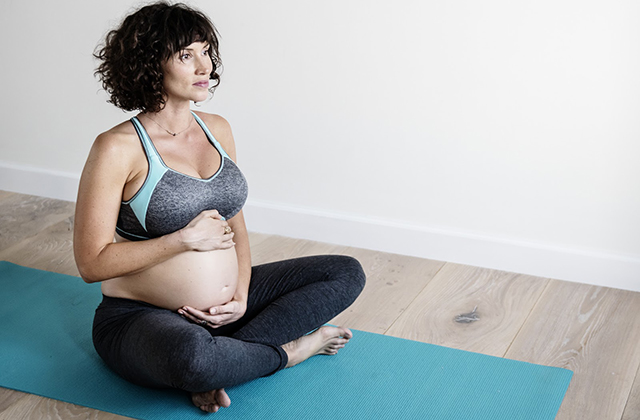Pilates classes are taught with inspirational music giving the session an intentional workout and it’s invigorating dynamic Pilates manly flow. What is the one common denominator among individuals at the top of their training game? What is the one essential element that each person, no matter if they are a top athlete or someone who is simply training to become and stay more fit, that they work on consistently? What is that one big component of training which all other training is built? That one thing – is strengthening your core. Arguably, core strength is the most important ingredient in your athletic training regimen. Skipping over this portion on your way to other types of sports performance training is short-changing your efforts. Each person wants to maximize their potential and core strength training is where you need to focus your efforts.
Your core is the basis for all of your everyday movements. Whether you are walking to the mailbox, carrying laundry or tossing a football in the backyard, you are using your core. It is a building block. Look at from an architectural standpoint. Every structure has to have a solid foundation on which something beautiful is built. That is the same here. Your core is the foundation of all the rest of your fitness training program and the basis on which your athletically trained body is built.
Why is this such a big deal? It’s crucial because you use your body as a whole in any athletic movement you are doing. The core is the central portion of that movement. The strength or weakness of the core can dictate how well you do with those movements. Whether you are on the court, the ice, or field of some sort, the relative strength of your core can play a large role in how well you can perform. Consider this, as well, that many of your movements athletically are not done in a perfectly set and ready position. More often than not, you are reacting, so you may be jumping, diving, or performing an action unbalanced. Again, the efficiency that you can perform these actions depends very heavily on your core strength.
I know the general consensus is to sit in the weight room and perform your routines regularly. That’s all well and good, but you need to work in some routines that will help in this area, as well. Not only will you see results, but you will work in some variety in your workouts.
Concentrating on working on this area of your body is not just for athletes either. If you are a “weekend warrior”, on the basketball court, biking, beach volleyball court or simply want to add to your overall fitness program, it is essential that you including core strengthening drills.
OK, so what types of things can you be doing? Well, I would start with an ancient, yet sometimes overlooked area – yoga. When we think of athletic training and stepping up a fitness program, we think of all kinds of stuff – weight room, kettle bell training, swimming and running. What usually falls way down the list, if it’s thought of at all here, is yoga. Sometimes, it gets stereotyped as being only for those who want a low impact, overall conditioning type program. It is not seen as an essential, at times, for individuals who are a little more serious about their program. The overwhelming reason which makes yoga such a great program is that it can be use for anyone at any point in their fitness program – Those just starting out, as well as those who are into a high degree of training.
I’m a huge Chicago Cubs baseball fan (yes, depressing I know….but hey ‘wait until next year’.). I remember when they had a player they acquired in a trade who had ankle surgery in the off-season. For some of you baseball historians, that player was Bill Buckner (before he played for the Red Sox). Part of Buckner’s rehab program was ballet. Ballet?! Yes, ballet – to try and help strengthen his ankle. What the heck does ballet have to do with this discussion of yoga, dude? Well, my point is that he looked at a non-traditional method to get him back on the field. This was done not to simply get him back on the field but back on the field playing well. He had a nice little run with his time in a Cub uniform. He got to the point where he even stole a few bases each year. That’s what I am trying to say with yoga, too. Don’t just dismiss it as something your grandparents have gotten into, or it’s primarily for females, blah, blah, blah.
When we talk about core strengthening programs, right at the top of the list sits yoga. It is a fantastic way to use cross training and is used by more and more top athletes. So, if top athletes are doing it as part of their program why aren’t you?
Yoga can help in so many other areas, as well – increase mental focus, help with anxiety, relaxation, flexibility, perfecting breathing techniques (this helps immensely in sports and getting the most out of your other workout routines), range of motion, balance, helps prevent injuries.
Develop a regular yoga practice. Incorporate this with your other training efforts. Do not do this as an afterthought. “I’ll get to it at the end of the week after I get my running miles in.” Like the rest of your efforts you need to have this as part of your overall weekly routine.
A huge advantage to using yoga is on the mental side. There are a plethora of benefits mentally by practicing on a regular schedule. Mental focus, concentration and being relaxed (reducing anxiety) are three primary outcomes. All of these abilities play a large part in getting the most out of your physical ability and ability to react to situations in a competitive situation. In addition, if the increased focus and concentration can help outside of the fitness world. These abilities can carry over into your professional and academic life, as well.
Core strength is what you are striving for with a yoga routine but you get so much more out of the programs, as well.
Core strengthening; do not overlook this area when developing your athletic training program. It works for the novice all the way to the advanced athlete. Use it to your advantage.
Get your training off to a fast start! Grab your free “Jump Start Your Training” guide at https://polestarpilates.com.au/
Article Source: https://EzineArticles.com/expert/M._Mancini/129010
Article Source: http://EzineArticles.com/6939547


